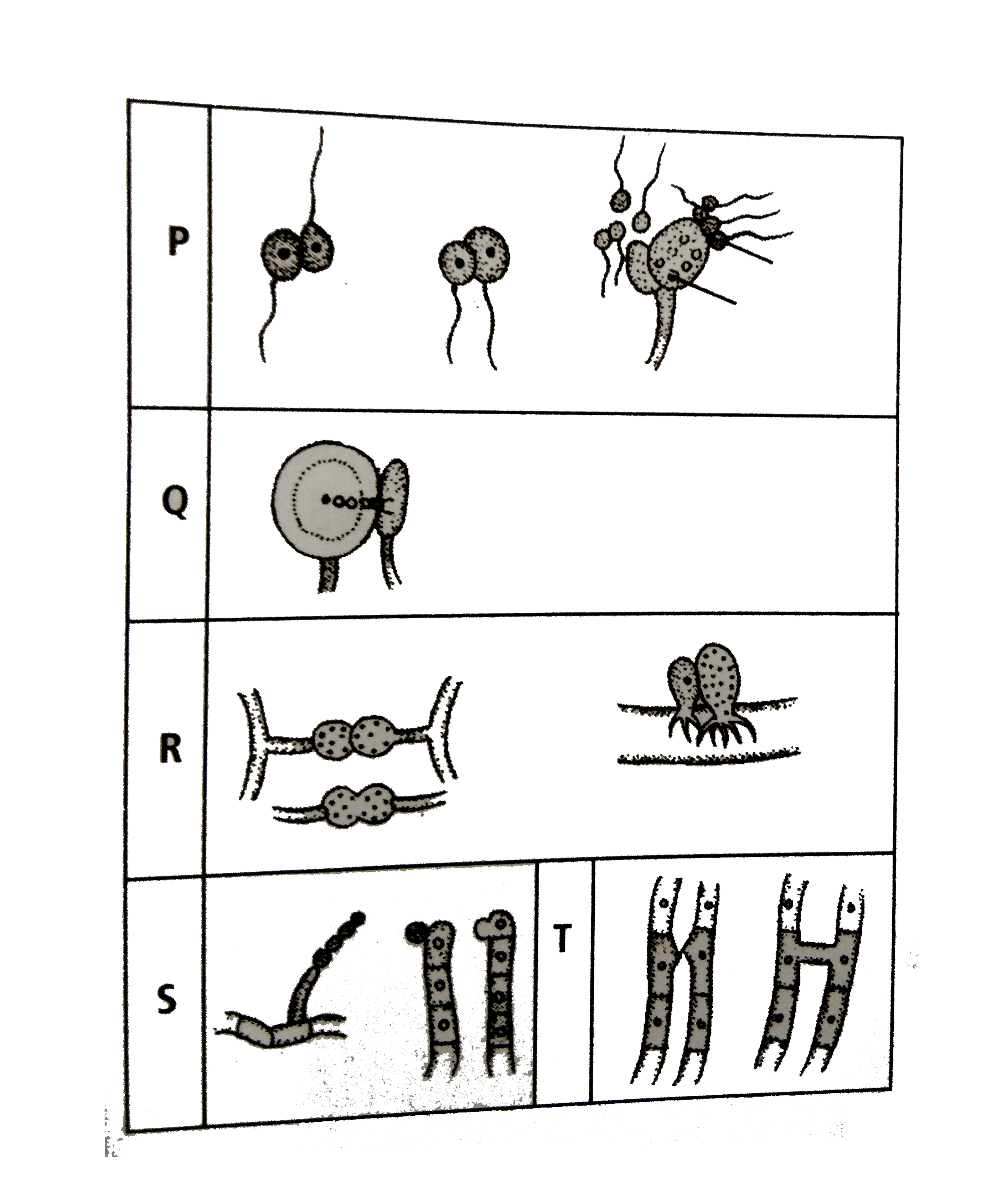A phenomenon present in some fungi called Diplanetism is : Option 1 Formation of two different types of thallus in the life cycle Option 2 Formation of two types of successive zoospores in the life cycle Option 3 Fungi existing in two morphological forms Option 4 Completion of life cycle in two hosts
Formation of two different types of thallus in the life cycle
Formation of two types of successive zoospores in the life cycle
Fungi existing in two morphological forms
Completion of life cycle in two hosts
The correct Answer is:B
To solve the question regarding the phenomenon called Diplanetism in fungi, we will analyze each option step by step.
1. Understanding Diplanetism:
- Diplanetism refers to a specific phenomenon observed in certain fungi where two different types of zoospores are produced during their life cycle.
2. Analyzing the Options:
- Option 1: Formation of two different types of thallus in the life cycle.
- This option is incorrect because Diplanetism does not involve the formation of different thalli.
- Option 2: Formation of two types of successive zoospores in the life cycle.
- This option is correct. In the example of the fungus *Saprolegnia*, two types of zoospores are produced: a primary zoospore and a secondary zoospore. The primary zoospore has flagella at the interior end, while the secondary zoospore has laterally inserted flagella.
- Option 3: Fungi existing in two morphological forms.
- This option is incorrect. Diplanetism does not refer to the existence of fungi in two morphological forms.
- Option 4: Completion of life cycle in two hosts.
- This option is also incorrect. Diplanetism does not involve the completion of the life cycle in two different hosts.
3. Conclusion:
- The correct answer is Option 2: Formation of two types of successive zoospores in the life cycle.
- Diplanetism refers to a specific phenomenon observed in certain fungi where two different types of zoospores are produced during their life cycle.
- Option 1: Formation of two different types of thallus in the life cycle.
- This option is incorrect because Diplanetism does not involve the formation of different thalli.
- Option 2: Formation of two types of successive zoospores in the life cycle.
- This option is correct. In the example of the fungus *Saprolegnia*, two types of zoospores are produced: a primary zoospore and a secondary zoospore. The primary zoospore has flagella at the interior end, while the secondary zoospore has laterally inserted flagella.
- Option 3: Fungi existing in two morphological forms.
- This option is incorrect. Diplanetism does not refer to the existence of fungi in two morphological forms.
- Option 4: Completion of life cycle in two hosts.
- This option is also incorrect. Diplanetism does not involve the completion of the life cycle in two different hosts.
- The correct answer is Option 2: Formation of two types of successive zoospores in the life cycle.
Topper's Solved these Questions
Similar Questions
Knowledge Check
Sexual reproduction in fungi is carried out by the fusion of compatible nuclei from two parents at a definite stage in the life cycle. Identify the different types of sexual reproduction occurring in fungi from the given figures and select the correct option
 A
A B
B C
C D
D
Choose correct option w.r.t division during gamete formation and division in zygote for organisms having haplontic life cycle respectively
View SolutionA liverwort plant is unable to complete its life- cycle in a dry enviornment State two reasons .
View SolutionWhich one of the following plants shows a very close relationship with a species of moth, where none of the two can complete its life cycle without the other
View SolutionWhich one of the following plants shows a very close relationship with a species of moth, where none of the two can complete its life cycle without the other
View SolutionIn mammals the teeth are
(a) of different types
(b) embedded int eh cuplike socket in the jaw bones
(c ) two sets presents throughout life
The condition are referred as :
View SolutionHeterospory, i.e., formation of two types of spores-microspores and megaspores is a characteristic feature in the life cycle of a few members of pteridophytes and all spermatophytes. Do you think heterospory has some evolutionary significance in plant kingdom?
View SolutionHeterospory, i.e., formation of two types of spores-microspores and megaspores is a characteristic feature in the life cycle of a few members of pteridophytes and all spermatophytes. Do you think heterospory has some evolutionary significance in plant kingdom?
View Solution

